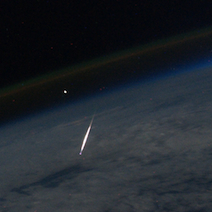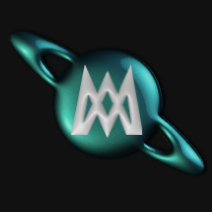Recently, everyone has been looking at the night sky, looking for a meteor. Astronaut Ron Caran, currently on board the International Space Station, had a unique view; he saw and captured a meteor burning up in our atmosphere, from space!

The picture was taken during the annual Perseid meteor shower, on August 13, so this meteor was probably a Perseid. Ron Garan posted this picture on his twitter account, writing:
“What a “Shooting Star” looks like #FromSpace Taken yesterday during Perseids Meteor Shower.”
 Meteor showers are caused by streams of cosmic debris called meteoroids entering Earth’s atmosphere at extremely high speeds on parallel trajectories. When these debris burn in the atmosphere, a number of meteors are observed to radiate from one point in the night sky. The Perseids meteor shower is generally the most visible one: it usually peaks on August 12, at a rate of over 60 meteors per hour.
Meteor showers are caused by streams of cosmic debris called meteoroids entering Earth’s atmosphere at extremely high speeds on parallel trajectories. When these debris burn in the atmosphere, a number of meteors are observed to radiate from one point in the night sky. The Perseids meteor shower is generally the most visible one: it usually peaks on August 12, at a rate of over 60 meteors per hour.
Another famous meteor shower is the Leonids, which is the most spectacular one. It is associated with the comet Tempel-Tuttle and usually peaks around November 17, at a much higher rate. Each 33 years, the Leonids create a “meteor storm”, peaking at rates of thousands of meteors per hour! The most famous of these storms is probably the one that occurred in 1833, when it was first realized that the meteors radiated from near the star Gamma Leonis. On November 17, 1833, the storm peaked at literally insane rates: between 100,000 and 200,000 meteors per hour! That’s 30 to 55 meteors per second! This exceptional storm was due to a direct impact with the comet’s dust trail left 33 years earlier.
While such fierce storms are very unlikely for the next several decades, astronauts on board the ISS can give us an idea of the stunning sight they have up there, and share with us a few very, very special moments.


